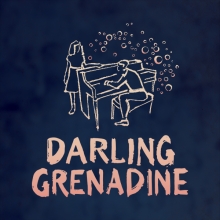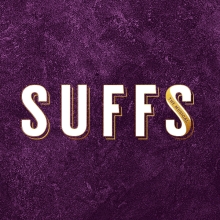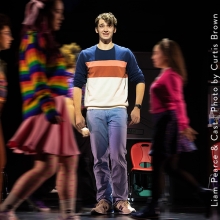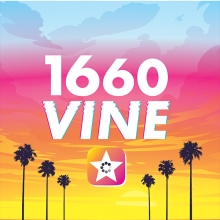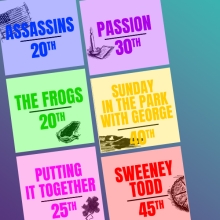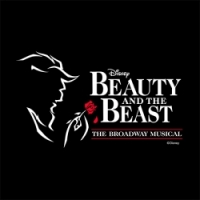
Full Synopsis
Act One
Once upon a time in a faraway land, an Enchantress turns a selfish and spoiled young Prince into a hideous beast. To break the spell, the Beast must learn to love another and earn their love in return before the last petal falls from an enchanted rose. If he cannot, he will be doomed to remain a beast for all time.
Meanwhile, Belle, a young woman in a provincial French village, arises to greet the morning. The villagers bustle about their daily business as Belle makes her way through the town, engrossed in a book. While the villagers gossip about how odd they find her introversion and love of reading, the boorish Gaston plots to marry her solely on account of her looks ("Belle").
Belle arrives home to find her father, Maurice, struggling to stabilize his newest invention. Belle confides in him her worries that people think she is odd. Maurice reassures her, and once he finally fixes his machine, sets off to showcase his brilliant work at the fair. Soon, however, Maurice loses his way in the woods and encounters a pack of wolves ("Maurice Travels"). Fleeing for his safety, Maurice stumbles upon a castle and pleads for shelter. Once inside, he encounters the enchanted staff - Lumiere, Cogsworth, Mrs. Potts, Chip, and Babette - who were also transformed by the Enchantress's spell. After Maurice's initial shock, they try to make him feel comfortable, but the Beast appears and imprisons the intruder.
Back in the village, Gaston proposes to Belle ("Me"), much to the dismay of the twittering Filles de la Ville. Belle refuses him and expresses her longing for adventure outside the mundanity of village life ("Belle - Reprise"). Belle notices Lefou wearing her father's scarf which he says he found in the woods. Concerned for her father, she runs off in search of Maurice.
As the castle staff transforms more completely into objects each day, Lumiere and Cogsworth lose hope that the spell will ever be broken; however, their hope returns when Belle enters the castle in search of her father. Belle finds Maurice in the dungeon, but the Beast appears and prevents their escape. She offers herself in exchange for Maurice's freedom; the Beast agrees, sending Maurice back to the village and Belle to her new room where she reflects on her choice ("Home"). Mrs. Potts and the enchanted wardrobe, Madame de la Grande Bouche, encourage Belle not to lose hope ("Home - Reprise").
At the village tavern, Gaston mopes about his rejection while his cronies try to boost his spirits ("Gaston"). When Maurice barges in claiming that a monstrous beast is holding Belle captive, Gaston devises a plan to trick Belle into marrying him ("Gaston - Reprise").
Meanwhile, the castle staff tries to teach the Beast to act like a gentleman, but when Belle refuses to join him for dinner, he loses his temper ("How Long Must This Go On?"). Meanwhile, the enchanted staff serves a hungry Belle an extravagant meal, despite their master's orders ("Be Our Guest"). Afterward, Cogsworth and Lumiere lead Belle on a tour of the castle, but when Belle sneaks into the west wing, the Beast discovers her and once again loses his temper. A frightened Belle flees the castle, leaving the Beast alone with his remorse ("If I Can't Love Her").
Act Two
As Belle dashes through the forest, a pack of wolves advances on her, but the Beast leaps in and saves her. Having a change of heart, Belle accompanies the Beast back to the castle and tends to his wounded arm. The staff - as well as Belle and the Beast - notice that there is a change between them ("Something There"). Belle and the Beast bond, giving the staff hope that the spell soon might be broken ("Human Again"). Belle asks the Beast to have dinner with her, and the two share a wonderful evening that concludes with a dance ("Beauty and the Beast").
Despite her feelings for the Beast, Belle longs to see her father. Using the Beast's magic mirror, Belle sees that Maurice is in trouble, and the Beast lets her go in order for her to save her father from Gaston and a frightened and angry mob. Though the Beast has finally learned to love, he fears he has lost his final chance to regain his humanity before the last rose petal falls ("If I Can't Love Her - Reprise").
Belle finds her father in the woods and, upon returning to the village, confesses that the Beast has changed the way she sees the world ("A Change in Me"). Gaston, accompanied by Monsieur D'Arque, the asylum proprietor, arrives with plans to send Maurice to the asylum if Belle refuses his marriage proposal. To prove her father's words are true, Belle uses the Beast's magic mirror to show him to the villagers. Jealous of Belle's kind words for such a "monster," Gaston emboldens the villagers to set off on a quest to storm the castle and kill the Beast, while Belle vows to return to the castle to warn him ("The Mob Song").
Once he's infiltrated the castle, Gaston confronts the Beast in the west wing and stabs him before stumbling and falling off the turret to his death. Belle arrives and holds the dying Beast in her arms, telling him that she loves him ("Home - Reprise"), thereby breaking the spell. The Beast transforms back into the Prince, the staff becomes human again, and they all live happily ever after ("Transformation/Finale").
Show History
Tale as Old as Time
The story of a “beauty” and her “beast” has enchanted children and adults around the world for centuries. Rooted in legends from ancient Greece, India, and Africa, the “tale as old as time” has been interpreted in myriad cultures and periods, each version reflecting the hopes, fears, moral codes, and gender stereotypes of the society in which it was written. The best-known version of “Beauty and the Beast” is unique among fairy tales, based on the literary work of two women, Madame Gabrielle-Suzanne Barbot de Villeneuve (1685-1755) and Madame Jeanne-Marie Leprince de Beaumont (1711-1780), rather than the famous male authors of the genre: Charles Perrault (1628-1703), the Brothers Grimm (Jacob: 1785-1863, Wilhelm: 1786-1859), and Hans Christian Andersen (1805-1875).
In 1740, Villeneuve published "La Belle et la Bête," not as a platform for educating children or examining French society, but rather to entertain her salon friends with the romantic intertwined histories of a beauty and her beast. In 1756, Beaumont emigrated from France to England, becoming a tutor and author. She shortened Villeneuve’s version, leaving out the personal histories of Beauty and the Beast and ending the story with the Beast’s transformation. In the hands of two female authors, being well-read became a defining quality of this modern hero, who continues to attract fans over two centuries later. (For more on fairy tale antecedents, see pp. 9-12 in the Dramaturgy chapter of the Production Handbook.)
A New Hero for the New Generation
In the late 1980s, Walt Disney Animation Studios looked back to its roots in using fairy tales as source material to inspire its next generation of films. With The Little Mermaid showing promise in production, company leaders saw in the tale of “Beauty and the Beast” a rich basis for a feature that could break new ground for the genre and its archetypal hero, yet still feel like a natural successor to Disney animated classics like Snow White and the Seven Dwarfs (1937), Cinderella (1950), and Sleeping Beauty (1959).
In adapting this fairy tale for a new medium and the approaching millennium, writer Linda Woolverton, lyricist Howard Ashman, composer Alan Menken, producer Don Hahn, and directors Kirk Wise and Gary Trousdale undertook significant revisions to the Beaumont version, as she had done with her own adaptation. Their Belle would stand out as a hero for the 1990s – not just beautiful and virtuous, but also smart and strong-willed, unafraid to challenge the Beast. She would be tormented not by wicked sisters, as in the source story, but by an outwardly handsome suitor, Gaston, who was truly a beast inside. Instead of being left alone in the castle with the Beast, Belle would be entertained by staff who had been transformed into household objects by the same spell that cursed the Prince. A teapot-cook, clock-butler, candelabra-valet, and many others would sing, dance, and weave their own spell of fun and enchantment on this young woman who might relieve them of the curse – if the Beast could learn to love her, and she freely return that love.
Released in November 1991, Disney’s animated Beauty and the Beast garnered widespread acclaim. Critics praised its songs as worthy of a stage musical and observed that a Broadway sensibility also infused the film’s staging and characterizations. Beauty and the Beast received six Academy Award® nominations. In the era before the introduction of the Best Animated Feature category, Beauty and the Beast was the first animated feature to be nominated for Best Picture and the first film to be nominated for three songs: “Belle,” “Be Our Guest,” and “Beauty and the Beast.” The film took home Oscars® for Best Original Score and Best Original Song (“Beauty and the Beast”).
Coming Home to the Theater
In 1992, theater veteran, Robert Jess Roth – who staged the original Beauty and the Beast live theme park show – approached Michael Eisner to discuss the idea of doing a Broadway version. Although the idea seemed absurd at the time, Eisner and his colleagues soon warmed to it and plans were quickly put in place to mount a live stage version in New York City.
Linda Woolverton, who is credited with the screenplay, was tapped to write the book for the Broadway production. The Oscar®-winning score by composer Alan Menken and the late lyricist Howard Ashman was expanded for the stage with seven new songs by Menken and lyricist Sir Tim Rice, including the ballads “Home” for Belle and “If I Can’t Love Her” for the Beast. In addition, “Human Again,” an unused full-ensemble song that Ashman and Menken wrote for the film, found a suitable home in the musical’s second act.
Scenic designer Stanley A. Meyer and now legendary lighting designer Natasha Katz crafted a unique fairy tale atmosphere for the stage through contrasting modes: a bright provincial fairy tale village and the ominous darkness of an enchanted castle. Respected Broadway costume designer Ann Hould-Ward created enchanted objects who transformed further over the course of the play. She worked with choreographer Matt West to ensure that these spectacular but often voluminous object creations could accommodate human movement, particularly for the show-stopping production number, “Be Our Guest.” Finally, in order to set up this high-stakes dream for success, company executives Ron Logan and Robert McTyre established a new entity: Walt Disney Theatrical Productions.
The Moment of Truth
After two years of creative development, the new stage musical was ready for an audience – the true test of what’s working and what isn’t. Like most musicals, Beauty and the Beast went “out of town” to allow time and distance from New York so the team could make improvements before a Broadway premiere. At the end of 1993, the show played 40 performances at the Theatre Under the Stars in Houston, Texas. On March 9, 1994, Beauty and the Beast began previews at New York City’s iconic Palace Theatre. Its opening night on April 18 marked the official launch of Disney on Broadway.
Beauty and the Beast earned nine Tony Award® nominations, including Best Musical, Best Director (Rob Roth), Best Score (Alan Menken, Howard Ashman, and Tim Rice), Best Book of Musical (Linda Woolverton), Best Lighting Design (Natasha Katz), Best Costume Design (Ann Hould-Ward), Best Actress (Susan Egan as Belle), Best Actor (Terrence Mann as the Beast), and Best Supporting Actor (Gary Beach as Lumiere). Ann Hould-Ward took home her first Tony® that year.
Beauty and the Beast continued to gain recognition in the music world when the Original Broadway Cast Recording was nominated for a GRAMMY® Award. In order to be available for sale by first preview, the cast album was recorded on the second day of Broadway rehearsals, while the show was still evolving. As a result, the recording features lyrics and even an entire verse of “Home” that never made it to opening night.
A Change in Beauty and the Beast
Unlike a movie’s premiere, where the work of art is memorialized in final form, a living, breathing musical’s Broadway opening is simply a milestone in a continuing journey of creative potential, including changes to the show itself. For example, Belle’s current 11-o’clock number, “A Change in Me,” was written by Menken and Rice when Toni Braxton joined the Broadway cast in 1998. The song was a hit, so it became a permanent part of the score. The song transformed yet again in 2005 when Ashley Brown, who had sung the song with a new ending in Disney’s touring musical revue On the Record, brought this version to Broadway when she became the 15th Belle.
Beauty and the Beast’s Broadway tale also included a change of venue. After playing five years at the Palace, a slightly reimagined production opened at the Lunt- Fontanne Theatre on November 11, 1999, where it ran successfully until July 29, 2007. The musical played a total of 46 previews and 5,464 regular performances, making it the sixth longest-running Broadway show at that time. As of 2019, it holds the record as the longest-running production at both theaters
Over the course of Beauty and the Beast’s 13-plus-year run on Broadway, over 150 musicians and 250 actors performed in the production, including 17 in the role of Belle and 27 in the role of Chip. Actor Steve Blanchard, who had played both Gaston and the Beast in the Toronto production, spent a year as Gaston on Broadway before playing the title role for a record 3,358 performances.
There Must Be More Than This Broadway Life
Successful Broadway shows are often called to markets beyond the Great White Way, and Beauty and the Beast was no exception. From November 1995 through August 2003, the musical’s two North American national tours played 137 combined engagements over 370 playing weeks in 90 cities in 36 states and throughout Canada. The tours played a total of 2,893 performances to more than 5.7 million audience members, traveling 83,848 miles – enough to circle the globe more than three times. Around the world, Disney’s production of Beauty and the Beast has played in over 100 cities in more than a dozen countries on every continent except Antarctica.
In late 2004, Disney’s Beauty and the Beast began its journey beyond the iconic Disney production when the musical was released for licensing through Music Theatre International (MTI), ready for new artistic interpretations in local productions. Since then, Beauty and the Beast – along with Beauty and the Beast JR., a one-hour adaptation for middle school performers released in 2008 – has been performed by tens of thousands of school, community, and professional theater groups, as well as international theater groups everywhere from Finland to the Philippines. As of its 25th Anniversary in 2019, between Disney and licensed productions, Beauty and the Beast had been translated into 17 languages, produced in 37 countries, and seen by more than 35 million people at over 28,000 performances.
Even after remarkable success, Disney’s creative journey with Beauty and the Beast is far from over. As audiences were flocking to movie theaters for Walt Disney Studios's 2017 live-action remake, which featured new Menken/Rice songs, the stage musical team began meeting to discuss fresh ideas for reviving the Disney production. Like Belle with her favorite books, audiences and artists are eager to revisit the “tale as old as time” again and again.
Critical Reaction
"The astonishments rarely cease.... A sightseer's delight."
– The New York Times
"Enormously effective and, dare I say it, enchanting... solid family entertainment.... [Linda] Woolverton's commitment to re-spinning thefamiliar story about one man's loss of humanity into a deeply human tale is what has always made the stage Beauty and the Beast work."
– Talkin' Broadway
"Opulent, vibrantly colorful and brimming with beautiful music.... Decked out with gloriously colorful sets, costumes and special effects, a lush-sounding live orchestra and a hardworking ensemble of singers and dancers this production remains a 'Tale as Old as Time' that should not be missed."
– CenterStage Chicago
"[Beauty and the Beast] rocked my world. ...There's enough in the show to assure a fun time for all. ...With dire headlines running rampant 24/7, it's just so pleasant to curl up and enjoy a good old-fashioned journey between two misfits who learn to appreciate each other from the inside out, and find true love just in time before the final sparkling red rose petal falls."
– DC Theatre Scene
Academy Award
Grammy Award
Drama Desk Award
Tony® Award
Theatre World Award
Olivier Award
American Theater Wing
Ovation Award
.
Dora Award
Image Award
Connect
Billing
Requirements
|
Music by
ALAN MENKEN
(50%)
|
Lyrics by
HOWARD ASHMAN & TIM RICE
(50%)
|
Book by
LINDA WOOLVERTON
(50%)
|
(50% of Title)
Vocals Originally Arranged by David Friedman
Orchestrations by Danny Troob
Video Warning
In accordance with the Performance License, you MUST include the following warning in all programs and in a pre-show announcement:ANY VIDEO AND/OR AUDIO RECORDING OF THIS PRODUCTION IS STRICTLY PROHIBITED.
If you purchase a video license to allow non-commercial video recording of this production, then you MUST include the following warning in all programs and in a pre-show announcement:
ANY VIDEO RECORDING MADE OF THIS PERFORMANCE IS AUTHORIZED FOR PERSONAL, AT-HOME, NON-COMMERCIAL USE ONLY. THE SALE OR DISTRIBUTION OF SUCH RECORDING IS STRICTLY PROHIBITED UNDER FEDERAL COPYRIGHT LAW.
Included Materials
| Item | Quantity Included |
|---|---|
| LIBRETTO/VOCAL BOOK | 30 |
| PIANO CONDUCTOR'S SCORE ACT 1 | 2 |
| PIANO CONDUCTOR'S SCORE ACT 2 | 2 |
| PRODUCTION HANDBOOK DIGITAL | 1 |
Production Resources
| Resource |
|---|
| CHOREOGRAPHY VIDEO GUIDES |
| LOGO TEES SIX-PACK ADULT LARGE |
| LOGO TEES SIX-PACK ADULT MEDIUM |
| LOGO TEES SIX-PACK ADULT SMALL |
| LOGO TEES SIX-PACK ADULT X-LARGE |
| LOGO TEES SIX-PACK ADULT XX-LARGE |
| LOGO TEES SIX-PACK CHILD LARGE |
| LOGO TEES SIX-PACK CHILD MEDIUM |
| LOGO TEES SIX-PACK CHILD SMALL |
| PERFORMANCE ACCOMPANIMENT RECORDING |
| PRODUCTIONPRO-DIGITAL SCRIPT/SCORE |
| REHEARSAL ACCOMPANIMENT RECORDING |
| SCENIC PROJECTIONS |
| SCENIC PROJECTIONS PRO |
| STAGE MANAGER SCRIPT |
| VIDEO LICENSE |
| ALT: FULL SCORE VOL 1 OF 4 |
| ALT: FULL SCORE VOL 2 OF 4 |
| ALT: FULL SCORE VOL 3 OF 4 |
| ALT: FULL SCORE VOL 4 OF 4 |
| CUSTOMIZABLE SHOW POSTER |
| FULL SCORE VOL. 1 OF 4 |
| FULL SCORE VOL. 2 OF 4 |
| FULL SCORE VOL. 3 OF 4 |
| FULL SCORE VOL. 4 OF 4 |
| HOW DOES THE SHOW GO ON? |
| KEYBOARDTEK |
| LOGO PACK DIGITAL |
| ORCHEXTRA |
| SCENIC PROJECTIONS-ANIMATED |
| SCENIC PROJECTIONS-STILL |
| SUBPLOT CUSTOMIZED SHOW POSTER |
| THE ORIGINAL PRODUCTION |
| TRANSPOSITIONS-ON-DEMAND |
| VIRTUAL STAGE MANAGER |
STANDARD ORCHESTRATION
| Instrumentation | Doubling |
|---|---|
| PERCUSSION | BELL TREE , CASTANETS , CHIMES , CROTALES (OR BELLS) , GLOCKENSPIEL , GONG , LOUD SLEIGH BELL , MARIMBA , MARK TREE , PIATTI , POP GUN , RATCHET , SLEIGH BELLS , SUSPENDED CYMBAL , TAMBOURINE , TEMPLE BLOCKS , TIMPANI , TRIANGLE , VIBRAPHONE , WOOD BLOCK , XYLOPHONE |
| BASS | |
| CELLO | |
| DRUMS | |
| HARP | |
| HORN | |
| HORN 2 | |
| HORN 3 | |
| KEYBOARD 1 | |
| KEYBOARD 2 | |
| KEYBOARD 3 | |
| REED 1 | FLUTE , PICCOLO |
| REED 2 | ENGLISH HORN , OBOE |
| REED 3 | BASS CLARINET , CLARINET , FLUTE |
| TROMBONE | BASS TROMBONE , TROMBONE , TUBA |
| TRUMPET | PICCOLO TRUMPET , TRUMPET |
| TRUMPET 2 | PICCOLO TRUMPET , TRUMPET |
| VIOLIN | |
| VIOLIN 2 |
ALTERNATE ORCHESTRATION
| Instrumentation | Doubling |
|---|---|
| ALT: BASS | |
| ALT: CELLO | |
| ALT: HORN | |
| ALT: KEYBOARD 1 | |
| ALT: KEYBOARD 2 | |
| ALT: PERCUSSION | BELL TREE , CASTANETS , CHIMES , CHINA CYMBAL , DRUM SET , GLOCKENSPIEL , GONG , LOUD SLEIGH BELL , MARK TREE , POP GUN (OPTIONAL) , SLEIGH BELLS , SUSPENDED CYMBAL , TAMBOURINE , TEMPLE BLOCKS , TIMPANI , TRIANGLE , WOOD BLOCK , XYLOPHONE |
| ALT: PIANO CONDUCTOR ACT 1 | |
| ALT: PIANO CONDUCTOR ACT 2 | |
| ALT: REED 1 | FLUTE , PICCOLO |
| ALT: REED 2 | ENGLISH HORN , OBOE |
| ALT: REED 3 | BASS CLARINET , CLARINET , FLUTE |
| ALT: TRUMPET | FLUGELHORN , PICCOLO TRUMPET , TRUMPET |
| ALT: VIOLIN |
